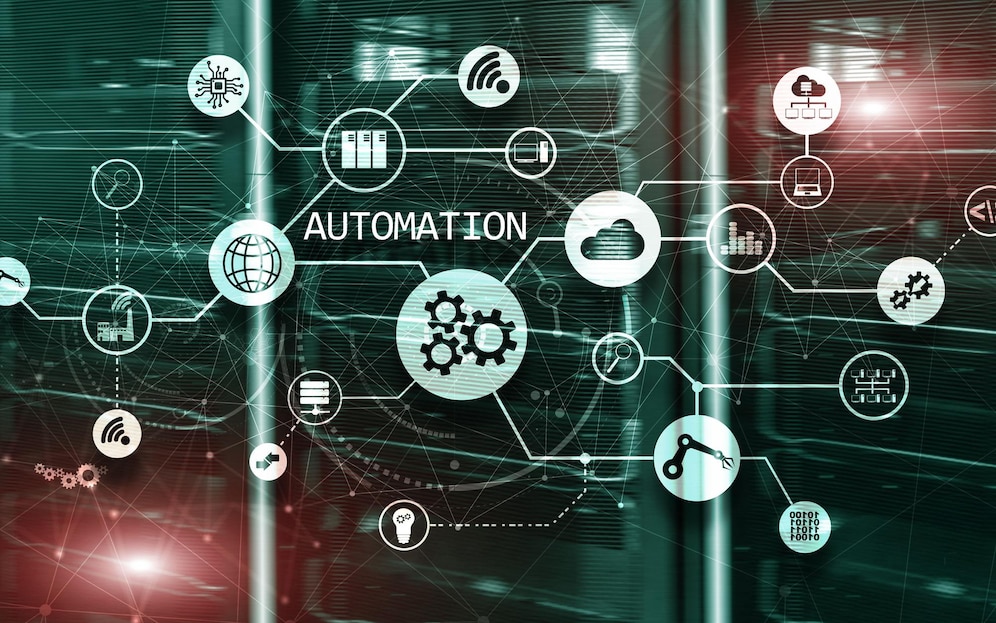Automation in data centers and cloud deployments relies on computer instructions to create a repeated process that replaces manual labor. makes humans work in those areas of IT where their efforts can better spend. With the help of the IT automation manual tasks are performed in automated such as:
- Cloud deployments
- Development
- Service desk
- Data centers
There is a broad scope to consider when automating IT tasks.IT automation makes regular tasks done automatically and repeatedly. For instance, setting your laptop for everyday backup files at a specific time. Orchestration and IT automation relate to each other but are different.
Orchestration is all about organizing and optimizing the entire process, not just one, so that system works better, smooth, and more secure operations. Let me give you the easiest example orchestration is like making all the instruments work together to build a perfect tone.
How IT Automation Works
IT automation is dependent on the software tools to perform a series of detailed actions either manually or by an external trigger, for instance, a change in IT capacity demand.
IT automation replaces a number of manual actions and responses to the IT environment and administrator. For instance, Microsoft Windows PowerShell joins variables, cmdlets, and some other components into a script. To perform tasks like creating a virtual machine or setting up a backup process, an administrator would typically use the command-line interface (CLI).
Because of the joining of multiple scripts into a series, administrators can achieve more complex IT automation. These automated processes are very beneficial when they replace tasks that are performed by administrators frequently. When thresholds and other conditions in the IT environment are met, enterprise-class IT infrastructure automation tools trigger actions.
Advanced IT automation tools work wonders, it oversees the system’s configuration, software, and other infrastructure components. It automatically corrects tasks and recognizes unauthorized or unexpected changes and responds to system alerts.
For instance, if the workload doesn’t respond, like causing disruptions so IT automation will take steps to fix the issue like restarting it on a different server that has enough capacity to run it smoothly. IT automation detects changes in configurations that are out of specs and restores them to the correct state when IT automation is set to enforce a desired state.
IT Automation is Used for:
IT automation is used for several tasks such as:
- Application deployment
- Incident management
- Security and Compliance
Benefits of IT automation:
1) Enhanced Productivity:
IT automation reduces manual tasks including testing, improves outcomes, and helps workers to focus more on productive and important projects.
The benefit of It automation in manufacturing setup is:
The usage of automated cells and machines enhances real-time communication.
24×7 production capacity running.
Adjusts just-in-time manufacturing without disruption.
2) Better Performance:
Most of the time IT managers have additional work and the requirement is to do it more efficiently and rapidly. And here IT automation comes into play, these automation tools streamlined the processes and optimize performance without the need for adding more staff.
3) Reduces Errors:
The chances for human errors are reduced because of the automated IT processes. An error-free business is a ladder to success. It better serves customers and wastes no time resolving issues and errors.
4) Better System Flexibility:
As a result of automation, the system can easily be reconfigured and retooled in order to accommodate new requirements.
As the production environment changes, IT automation in the form of robots can easily be redeployed.
Robots have the ability to adapt to new processes quicker.
It doesn’t take a lot of time to switch over.
5) Reduction in Costs:
One of the great benefits is a machine can do the work of 3-4 people. Additionally, as a result of the deployment of machines, heat is reduced, resulting in significant energy savings and a reduction in labor costs.
6) Increase speed:
It needs an important number of distinct tasks but modern businesses put extra pressure on the staff to respond rapidly to the needs. Humans are unable to handle workloads in minutes at any time of the day. its gives relief to administrators from spending a lot of time on routine or repetitive tasks. In this way, they focus more on valuable projects for the success of the business.
- Development gets quicker when time-consuming tasks are implemented automatically and results in:
- More refined testing.
- Consistent environment.
- Better overall products and services.
7) Consistent Delivery and Quality:
Adding means opening up the doors to more consistency in delivery and in quality. The reason behind it is machines are programmed with the quality metrics that result in delivering consistent output and the defined quality.
8) Enhance Security:
This is a great way to enhance security. Developers and other cybersecurity professionals can focus on proactively preventing vulnerabilities and threats from becoming larger issues by automating time-consuming and effort-filled tasks like monitoring.
Challenges of IT Automation:
IT automation offers a lot of benefits while there are some challenges as well. If you think that by implementing you will get the confirmed result then let me tell you the results are not guaranteed. Despite all the tools and technology frameworks available, there is no guarantee that these systems will eradicate errors, enhance security, and ensure compliance. Teams in IT must be competent in using these tools deployed throughout the organization.
Future of IT Automation:
IT automation is not a new concept it exists in the world for some time. now it has become an essential part of IT automation. If we clearly look at even the smartest tool it still needs an IT professional to maintain and develop discrete systems, templates, comprising scripts, workflows, and policies.
IT automation incorporates a larger amount of intelligence into its processes. These tools will heavily rely on AI and ML technologies in the future. When AI intelligence is integrated into it reduces the significance of man-made rules and creates a dependency on choices by high-end business costs and compliance requirements.












